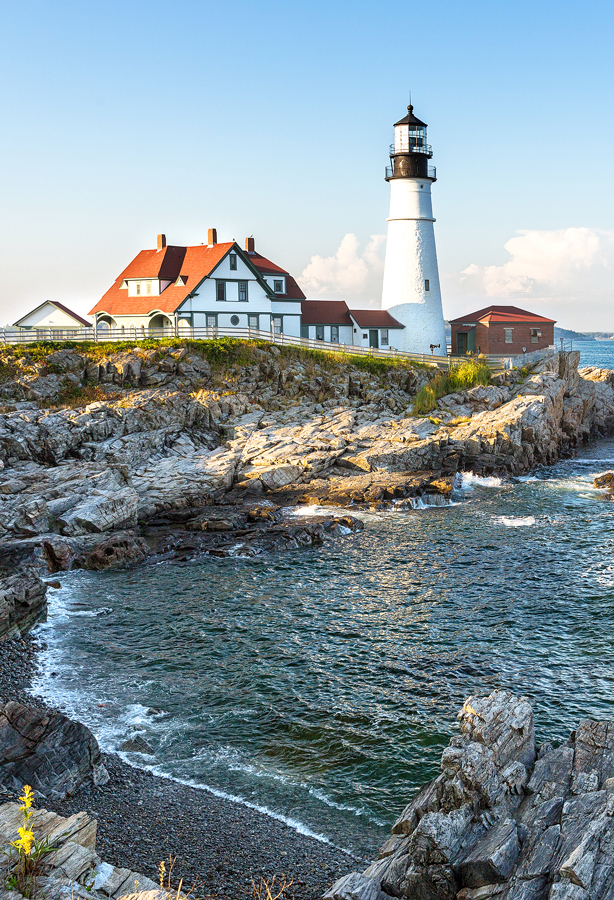From the frigid waters of Alaska to the rolling surf of California and the warm waters of Florida and the Gulf of Mexico, America’s coastline is revered for its diversity and breathtaking beauty. According to the NOAA, the country has over 95,000 miles of coastline and shoreline. It stretches along the Atlantic, Arctic, and Pacific oceans, as well as the Gulf of Mexico and the Great Lakes. Of the 50 states, 23 are located along oceans and seven have lakeshores. Whether you’re a sun worshipper, a wildlife lover, or a water sports fanatic, you’ll find plenty to love in the top 10 states with the longest coastlines.
10. Maryland
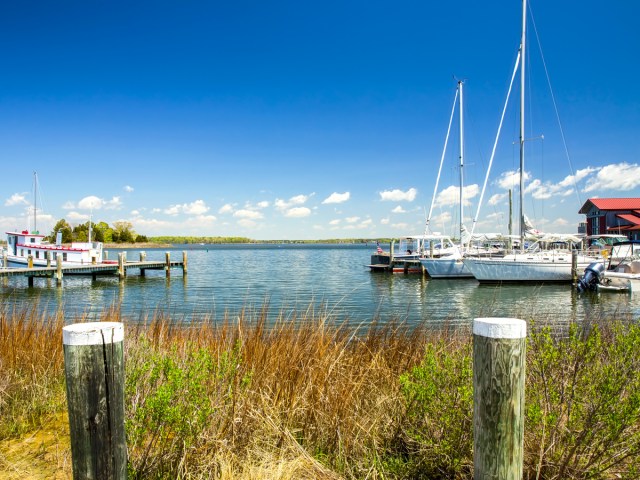
Total coastline length: 3,100 miles
The coastline of this mid-Atlantic state is concentrated mainly around Chesapeake Bay and a collection of Atlantic barrier islands. Baltimore, Maryland, has long been an important seaport, and its Inner Harbor district is home to significant maritime attractions such as the USS Constellation and the National Aquarium. Meanwhile, with an entertainment-packed boardwalk and sandy beaches, Ocean City offers a classic East Coast beach town vibe. The backwaters of Isle of Wight Bay are popular for kayak and boat tours, while coastal state parks offer prime wildlife watching. These include the Blackwater National Wildlife Refuge and Assateague Island National Seashore, home to a famous population of wild horses.
9. Michigan

Total coastline length: 3,224 miles
Despite having no direct ocean access, Michigan makes an appearance on this list for its meandering shorelines along four of the Great Lakes: Erie, Huron, Michigan, and Superior. Michigan boasts the country’s longest freshwater coastline, made up of sandy beaches and coastal wetlands in addition to bluffs, cliffs, dunes, and 387 lakeside communities. It’s no surprise, then, that the “Great Lake State” offers boundless opportunities for waterside adventure in the great outdoors. Protected areas such as Hiawatha National Forest and Ottawa National Forest offer excellent camping, hiking, fishing, and wildlife watching.
8. Virginia
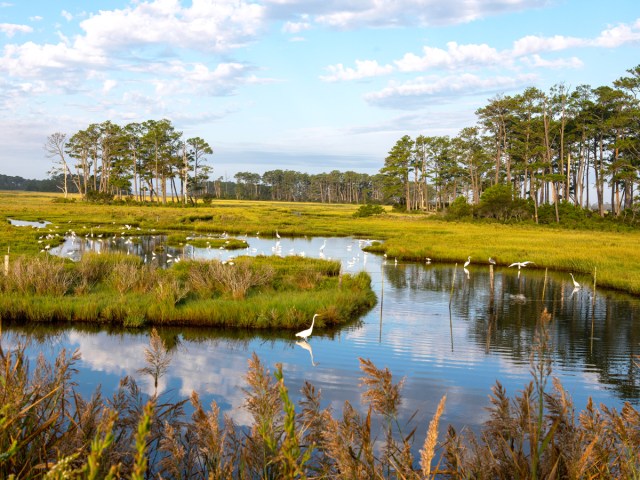
Total coastline length: 3,315 miles
Like neighboring Maryland, the coastline of Virginia is split between the Chesapeake Bay and the Atlantic Ocean. It’s dotted with historic landmarks such as Cape Henry Lighthouse, where English settlers first set foot on North American soil, and Jamestown, the first permanent English settlement in the Americas. The Volgenau Virginia Coastal Reserve protects 14 barrier and marsh islands, which provide a natural habitat for wildlife. Some 250 species of raptors, shorebirds, and songbirds rely on these islands for food. Hiking, birding, and fishing is allowed on most islands, including Myrtle and Mink, Paramore, and Smith.
7. Texas
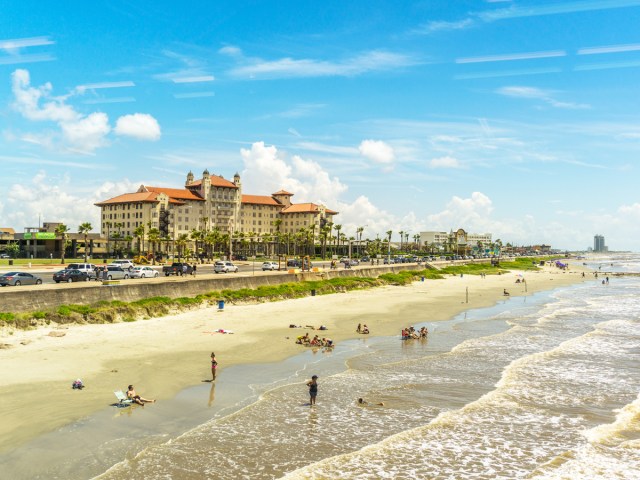
Total coastline length: 3,359 miles
The Texas coastline stretches along the Gulf of Mexico, between Louisiana and northeast Mexico. Six offshore islands, alongside dozens of charming towns, offer an ideal setting for seaside getaways packed with recreational and cultural activities. Head to tropical South Padre Island for water sports, spas, and a thriving food scene. On Galveston Island, visitors can explore unique architecture and embark on dolphin and whale-watching tours. Meanwhile, the bays, coves, and marshes of the Matagorda Island Wildlife Management Area are a natural breeding ground for fish and shellfish. They also shelter varied birdlife, namely peregrine falcons, Southern bald eagles, and whooping cranes.
6. North Carolina
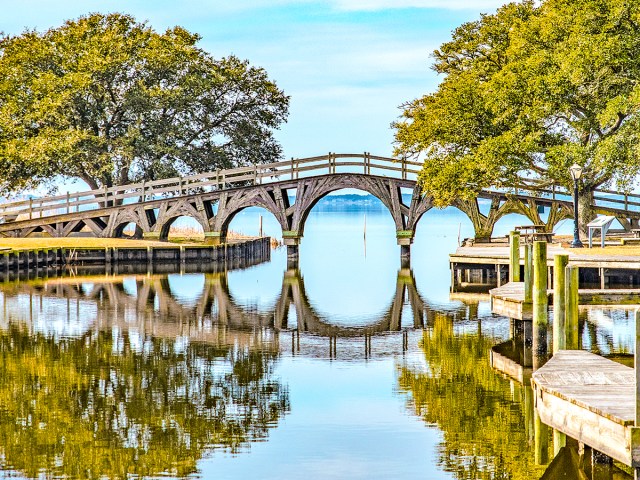
Total coastline length: 3,375 miles
Barrier islands, estuaries, maritime forests, sandy beaches — the North Carolina coastline has them all. Among the coast’s most emblematic features, though, is the Outer Banks region, a string of barrier islands with over 100 miles of open shoreline peppered with quaint seaside villages. Notable sights include Fort Raleigh National Historic Site and the Wright Brothers National Memorial, where the first successful airplane flight took place in 1903. If a blend of wild beaches, camping, water sports, and wildlife viewing is on the agenda, Cape Hatteras National Seashore certainly fits the bill. It became the nation’s first designated national seashore in 1937. Also of note is the Pamlico-Albemarle Sound. The largest estuary located solely in one state, it’s part of a 2.3 million-acre estuarine habitat for fish and shellfish.
5. California

Total coastline length: 3,427 miles
Stretching from Crescent City in the north to the Mexican border, California’s entire coastline is a protected national monument. Approximately 68.5% of the state’s population lives in coastal regions — mostly in and around the metropolitan areas of Los Angeles, San Diego, and San Francisco. The landscape of this dramatic stretch of the Pacific Ocean has everything from towering coastal cliffs and deep canyons to rolling pastoral lands and redwood forests. Popular tourist areas include Redwood National and State Parks, the seaside cliffs and misty mountains of Big Sur, and legendary surf towns like Huntington Beach and Santa Cruz.
4. Maine

Total coastline length: 3,478 miles
Famous for lighthouses and fresh lobster, Maine’s coastline is a postcard-perfect blend of romantic and rugged scenery. Stretching from Cape Elizabeth to Rockland, it features a series of bays, coves, fjords, islands, and peninsulas that are teeming with wildlife such as eagles, puffins, seals, and whales. A classic way to uncover this New England gem is to embark on a Route 1 road trip. The meandering journey will take you to quaint towns such as Kittery and York, hiking and camping in Acadia National Park, and historic lighthouses. Come August, Rockland’s popular Maine Lobster Festival is a five-day celebration of arts, music, and seafood.
3. Louisiana
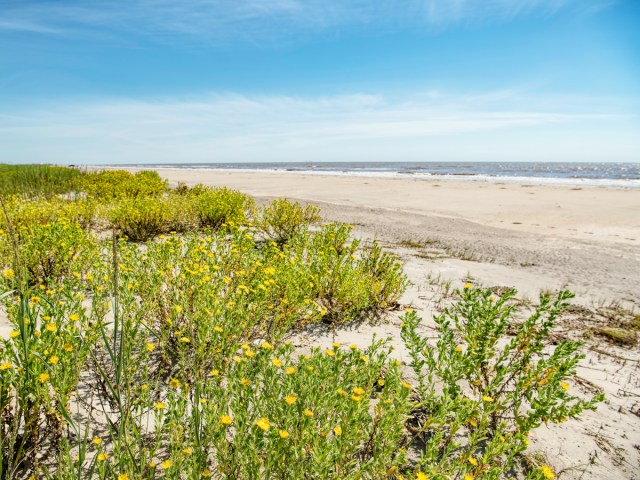
Total coastline length: 7,721 miles
Weaving along the Gulf of Mexico between Mississippi and Texas, the coastline of Louisiana is a unique and geologically rich environment, filled with barrier islands, bayous, marshes, and swamps. Of note, Louisiana’s marshes and swamps are some of the most fragile and important wetlands in the United States. In addition to being a source for agricultural and recreational interests, they support the state’s thriving seafood industry. Those looking for beach life will find it on Grand Isle, while some of the state’s best fishing is found on the Chandeleur Islands. The latter is accessible by boat only and shelters the Breton National Wildlife Refuge.
2. Florida

Total coastline length: 8,436 miles
No matter where you’re located in Florida, you’ll never be more than 60 miles from the beach. The Sunshine State’s iconic coastline is split between the Atlantic Ocean (3,341 miles) and the Gulf of Mexico (5,095 miles). Oceanside towns and cities such as Daytona Beach, Fort Lauderdale, and Miami sit along the Atlantic shores. Over on the state’s Gulf Coast, you’ll find cities such as Clearwater, St. Petersburg, and Sarasota. Everglades National Park occupies a huge portion of Florida’s southern coast, with mangroves and wetlands that provide a natural habitat for American alligators and crocodiles, Florida panthers, and American white pelicans. Farther south is the Florida Keys, a 120-mile-long string of narrow islands that lure vacationers with beaches, boating, scuba diving, and snorkeling.
1. Alaska
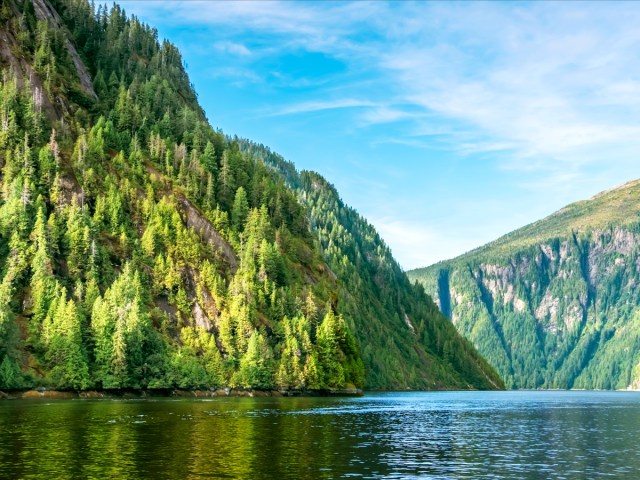
Total coastline length: 33,904 miles
Alaska is by far the biggest state in the U.S. by area — and also the one with the longest coastline. Divided between the Pacific Ocean (31,383 miles) and Arctic Ocean (2,521 miles), the coastal region of Alaska plays a vital role in the state’s history, culture, natural ecosystems, and economy. Coastal Alaska is a dramatic combination of fjords and glaciers, coastal mountains, and temperate rainforests. Within this unique landscape are 11 national parks, preserves, and monuments — including Glacier Bay National Park, Kenai Fjords National Park, and Wrangell-St. Elias National Park (the largest national park in the country). Each offers opportunities for hiking, boating, and wildlife watching. In Anchorage, the state’s largest city, the Alaska Native Heritage Center showcases the heritage and role of Alaska’s thriving native groups.
More from our network
Daily Passport is part of Inbox Studio, which publishes content that uplifts, informs, and inspires.






